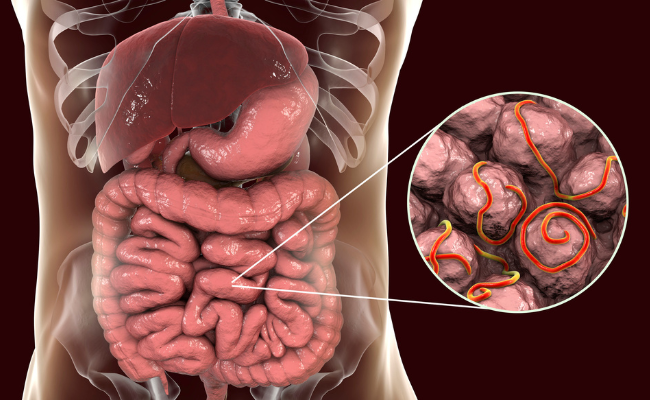How to Treat Amoebiasis?
- November 16, 2023
- No Comments

What is Amoebiasis?
Amoebiasis, caused by the parasite Entamoeba histolytica, is a gastrointestinal infection prevalent in regions with poor sanitation. This single-celled organism primarily affects the intestines, causing symptoms from mild discomfort to severe dysentery. Transmission occurs through ingesting contaminated food or water carrying the cysts of the Entamoeba histolytica parasite, emphasizing the critical role of sanitation.
E. histolytica, a solitary protozoan, enters the body when individuals consume cysts in contaminated food or water or through direct contact with fecal matter. These cysts, representing a relatively inert phase, can survive for months in soil or environments contaminated with infected fecal matter.
Why Does Amoebiasis Occur?
The primary cause of amoebiasis is the ingestion of contaminated material containing the cysts of the Entamoeba histolytica parasite. These cysts, resilient to environmental conditions, can survive for extended periods, increasing the likelihood of transmission in areas with inadequate sanitation practices. Poor personal hygiene, consumption of raw or undercooked food, and close contact with infected individuals contribute to the spread of the disease.
How is Amoebiasis Diagnosed?
Diagnosing amoebiasis involves a multifaceted approach, incorporating clinical evaluation, laboratory tests, and, in specific instances, imaging studies. The symptoms of amoebiasis can vary widely, encompassing abdominal discomfort, diarrhea, and, in severe cases, dysentery. Stool examinations play a pivotal role in confirming the diagnosis by identifying the presence of Entamoeba histolytica cysts or trophozoites.
In more complex cases, medical professionals may employ imaging studies such as CT scans or ultrasounds to assess the extent of organ involvement, particularly when the parasite affects organs beyond the intestines, such as the liver.
Treatment Solutions for Amoebiasis
- Metronidazole and Tinidazole: These antibiotics are the cornerstone of amoebiasis treatment, effectively targeting and eliminating the Entamoeba histolytica parasite. They are instrumental in treating both intestinal and extraintestinal forms of the infection.
- Diloxanide Furoate: Often prescribed following metronidazole or tinidazole treatment, diloxanide furoate helps prevent the recurrence of the infection.
- Pain Relievers and Anti-diarrheal Medications: Pain relievers and anti-diarrheal medications may be recommended to alleviate symptoms such as abdominal pain and diarrhea. However, caution is advised with anti-diarrheal medications, as they can potentially prolong the elimination of the parasite.
- Rehydration Therapy: In cases of severe dehydration resulting from persistent diarrhea, oral rehydration solutions or intravenous fluids may be administered to restore electrolyte balance and prevent complications.
- Liver Abscess Drainage (in severe cases): In instances where amoebiasis leads to the formation of a liver abscess, drainage may be necessary. This procedure is typically performed under medical supervision.
Benefits of Amoebiasis Treatment
- Elimination of the Parasite: The primary objective of amoebiasis treatment is the complete eradication of the Entamoeba histolytica parasite. Successful treatment prevents further damage to the intestines and other affected organs.
- Relief from Symptoms: Antibiotic and anti-parasitic medications effectively alleviate symptoms such as abdominal pain, diarrhea, and fatigue, offering relief to individuals suffering from the effects of amoebiasis.
- Prevention of Complications: Timely and effective treatment reduces the risk of complications associated with amoebiasis, such as the development of a liver abscess or the spread of the infection to other organs.
- Preventing Transmission: Treating infected individuals plays a crucial role in preventing the spread of the parasite within communities, particularly in regions with a higher risk of amoebiasis transmission.
- Improved Quality of Life: Successful treatment enhances the overall well-being of individuals by resolving symptoms and preventing the recurrence of amoebiasis. This contributes to an improved quality of life for those affected.
- Public Health Impact: By addressing and managing individual cases of amoebiasis, there is a broader positive impact on public health. Timely and effective treatment reduces the prevalence of the disease in communities, breaking the cycle of transmission.
Comments (0)